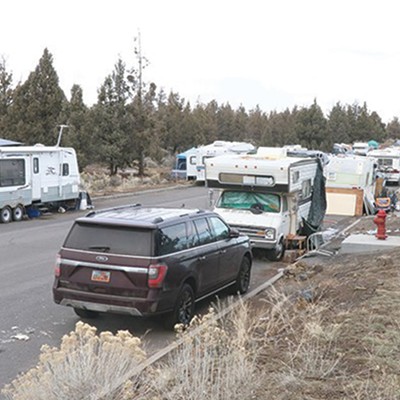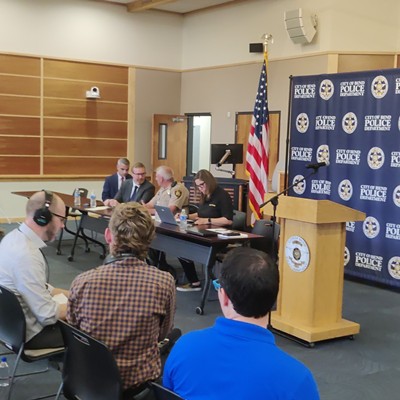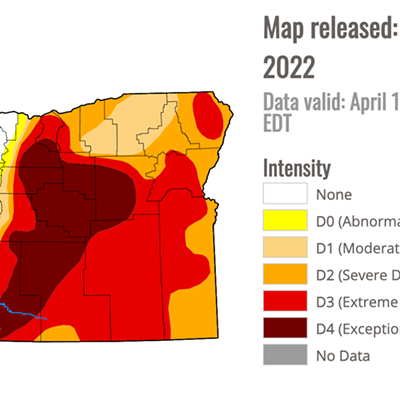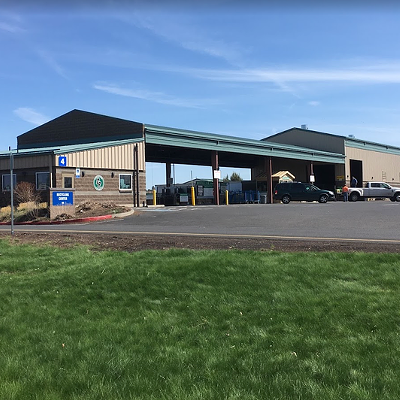Bend's growth is inevitable. Draft projections from Portland State University predict that the city's population will surpass 130,000 in 20 years. With this in mind, in what way the city grows is both a subject of deep concern and an opportunity for the community to help shape the future.
The inaugural Bend Livability Project is tackling these challenges head-on, with a weekend-long series of events designed to give locals the tools to engage with the civic process and create positive change in the community.
"Livability is about quality of life," explains Erin Foote Morgan, executive director of Bend 2030. "It's about joy in your daily life on your street and in your commutes around town, and in the safety and security of your home. It's about access to amenities such as art, culture, recreation and education."
The project is a collaboration between Bend 2030 and more than a dozen community partners including Habitat for Humanity, City Club, Central Oregon Association of Realtors, OSU-Cascades, Central Oregon Community College, Bend Park and Recreation District, Bend Chamber of Commerce, the City of Bend and the Central Oregon Intergovernmental Council (which manages public transit in the city).
The series kicks off Thursday, June 2, with a screening of "The Human Scale," hosted by BendFilm, followed by a panel discussion on innovations in planning, housing, and transportation including Bend Tech Ecosystem organizer Preston Callicott, Bend City Councilor Victor Chudowsky, Brooks Resources' Romy Mortensen, and Scalehouse's Rene Mitchell.
On Friday, the series features a Future Fair downtown during Art Walk. The fair will encourage Bendites to explore the city's future through hands-on art projects and activities.
The anchor event will be a conference on Saturday morning with speaker Matt Carmichael, editor of www.livability.com. He will set the stage with his keynote address before a special City Club forum on city governance.
Afterward, attendees may choose from a wide range of sessions in four tracks: neighborhood livability, housing, transportation and a la carte options. Sessions cover everything from cooperation between business districts and neighborhoods to tiny houses and tactical urbanism.
"This project is about empowering our community to understand that the decisions we must make, and the innovative programs we must create and implement, are up to us to envision and execute through avenues such as local government," Morgan says.
"The Bend Livability Project isn't just about education and awareness, it's about engaging people in new initiatives that shape policy and public opinion directly," she adds.
On Sunday, the Bend Livability Project will give people opportunities to put their education into practice with a Day of Action, with the goal of keeping people engaged moving forward. Morgan says that participants will learn how to use "tactical urbanism" to demonstrate where they would like to see change in their neighborhoods: "Think temporary chalk paint that could illustrate where a bike boulevard could go."
Morgan says they are working with the city to create a program to engage Bendites. "Here's the bottom line: policy is heavily influenced by interest groups," she says. "Let's create the interest groups that have our community's livability in mind."
Ultimately, the project aims to give regular people the tools to represent their interests with decision makers.
Community-driven solutions
Bend City Council and city staff may be charged with addressing local livability concerns, but the specific issues they hone in on is often determined by public opinion.
"It's important for the community to define the problem that they want to address," says Bend City Manager Eric King. "Some residents in Bend think that having popular businesses in walking distance to their homes is a great opportunity. Some think it is a livability concern."
Local leaders want to hear that feedback, and are planning to take seriously the ideas generated by the project.
"Following the Livability Project, we have scheduled a joint meeting with the Planning Commission and City Council to discuss a work program for addressing future code revisions," King says. "Many of these concepts we anticipate will come out of the Livability Project."
Livability.com's Carmichael says this is how it should be. He will share his insight at the conference held on June 4 at Central Oregon Community College, which is open to the public.
"Ideally the community and the government should work together toward stated livability goals," he says. "The government needs the community's input and support about where and how to make change, but the community must have a government that wants to make changes or else it won't work in the long run."
What does a livable city look like?
"Livable cities are great places to live, work, and play—for everyone," explains Carmichael. "That last part is key. Cities should be affordable and offer choice and opportunity for a diverse group of residents."
That includes the basic building blocks of community, he says: housing, healthcare, safety, and education, which are essential for a city to be habitable. Beyond that, factors like climate, arts, culture and recreation determine whether a city is desirable. Contemporary use of the buzzword "livability" tends to encompass all of these ideas, while also alluding to the more ethereal and somewhat elusive "quality of life."
Bend does well in categories such as outdoor recreation and beer culture, often ranking highly among other trendy tourist destinations. When it comes to some of the essentials that locals rely on, however, the city is struggling somewhat. Rental vacancy rates continue to hover near zero, public transit remains underfunded and though Bend often feels as if it's at capacity, the metropolitan area is among the fastest growing in the nation.
Still, most locals remain enamored with Bend. It's clearly a good enough city to live in, but could it be great? In Livability.com's most recent rankings, Bend comes in at 53 in a list of the Top 100 Most Livable Cities.
"Bend has been a consistent performer on our Top 100 Best Places to Live list. It's got a lot going for it as a community already," says Carmichael. "That said, I think Bend is facing the same issues many great places to live are confronting; namely, how to keep the character of the city while growing and developing, and also how to remain affordable as you become more desirable."
The fact that Bend is holding a conference to tackle these issues, he adds, is proof that the city is on the right track.
What would it mean for Bend to be more "livable"? Bend's unofficial bumper sticker slogan, "Poverty with a view," captures the city's ongoing identity crisis around livability. National media extoll Bend's mountain bike trails and beer scene while working grandmas sleep in shelters.
Like the Pied Piper, the city woos tourists with its promise of stunning natural beauty and modern urban amenities. Still flush with a honeymoon glow, these visitorsoften resolve to embody Airbnb's motto: "Live there."
Beneath that disconnect between the haves and have-nots, most people seem to recognize that a more livable community benefits everyone.
Bend Livability Project
June 2 to 5
Schedule and more information:



























